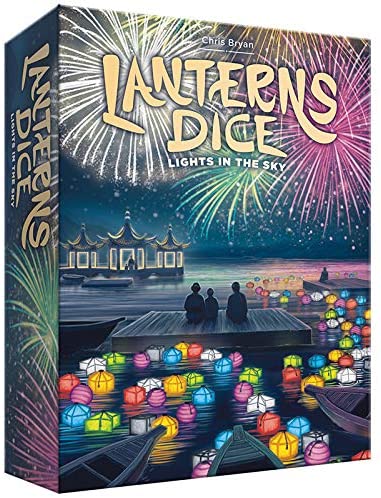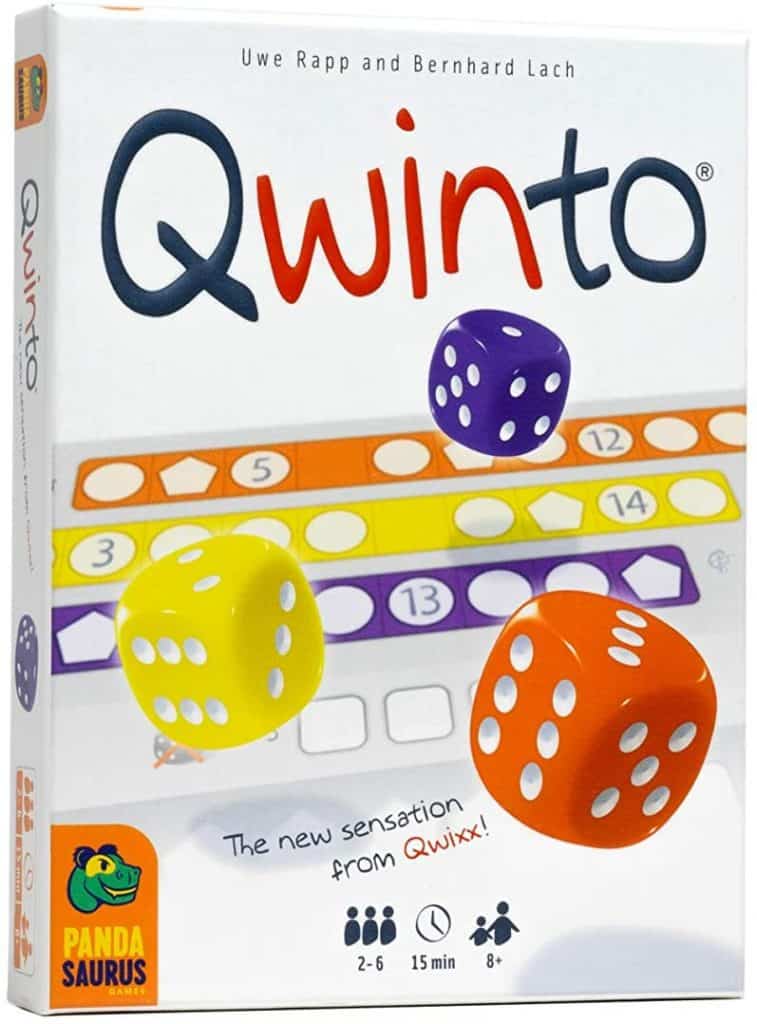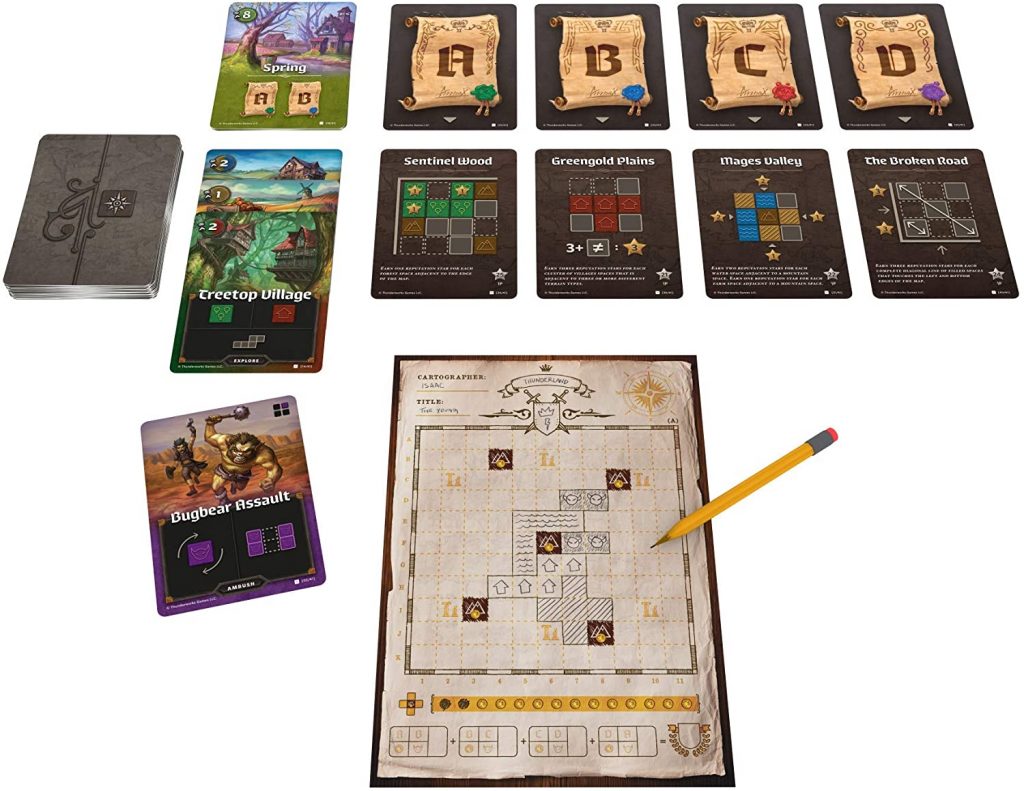Disclosure: This post contains affiliate links, which means I may receive commissions for purchases made through links in this post, at no cost to you. Please read my disclosure for more info.
Our Top 3 Picks for the Best Roll-and-Write Games
2nd choice
Best overall
3rd choice
Roll-and-write games are a genre that is becoming increasingly popular. Part of their appeal is how easy they are to learn. As their name says, you simply roll some dice and write down the results in whatever manner the game requires. They’re also games that don’t take long to play through, making them perfect for younger kids, elderly relatives, and everyone in between.
One of the best features of a roll-and-write game is that there are very few gaming components, which means they’re easy to set up, put away, and carry with you wherever you go. Few components also means they’re inexpensive.
Whether you’re a family looking to add some roll-and-write games to your collection, searching for a gift for the game-lover in your life, or a seasoned gamer yourself and in need of something new, there’s a roll-and-write game that’s perfect for you. These are what we think are the 10 best roll-and-write games, ranked from #10 to #1.
The Best Roll-and-Write Games
10. That’s So Clever/Twice As Clever!
As with most roll-and-write games, each player has a game sheet and pen, and at the top of the paper are spaces for you to keep track of which round you’re on. The game begins with one player rolling the dice. After rolling, choose one die to use. Whichever of the colored dice you choose, write its number in the corresponding-colored box on your sheet. If you choose a pink die, you write its number in the corresponding spot in the pink row, etc. Certain spaces along that row will offer special bonuses. In fact, each of the colored sections offer bonuses or victory points.
If any of the other dice are lower than the original die you chose, set those back into the box, or “silver platter”. Reroll the remaining dice that are not in the silver platter. Choose a die from the ones you’ve rerolled and add its number to your paper. The dice lower than the number you just wrote down can be placed in the platter. Then re-roll the rest of the dice (not in the silver platter) again.
Do this up to three times, so all three of your dice squares on the top left of your sheet are full. Then pass the dice onto the next player. Once all rounds have been played, tally up the victory points on the back of each game sheet and declare a winner.
This game is a sequel to That’s Pretty Clever, but more highly rated. It’s not quite as simple to learn as many other roll-and-write games, but once you’ve caught on, you’ll love the unique — and sometimes infuriating — combination of luck and strategy involved.
- 1-4 players
- Playing time: 30mins
- Recommended ages: 10 & up
- Complexity: 2.36/5
9. Railroad Ink
Although this is another railroad-themed game, it’s not at all like MetroX (listed below) or even Ticket to Ride, as the goal here is to connect as many “exits” as possible to score points.
The game consists of dry-erase game boards and four dice. At the beginning of each round, the dice is rolled and everyone records the results on their board.
You begin at one of the “exits” and draw a road for each road, railway track, a crossroads, etc., displayed on the dice. There are special squares at the top of each board that can be added to the map on your game board, one square per turn. Once everyone has marked their moves, the dice are rolled again and play continues accordingly.
At the top of your board, you’ll find spots to record your victory points earned for connecting exits and entrances, longest road etc. Once the game is over, players count their networks of roads, rails, etc., and add up points.
There are two base versions of Railroad Ink — Deep Blue and Blazing Red. They’re pretty much the same except for a few little variations. And if you like, you can combine the two games for a bigger game with more players, or simply play them individually. Plus, there’s a solo-play option too.
- 1-6 players
- Playing time: 20-30mins
- Recommended ages: 8 & up
- Complexity: 1.53/5
8. Cartographers
In Cartographers, players earn the queen’s favor by beautifully mapping out her kingdom. Unlike most of the other roll-and-write games mentioned here, it’s technically a flip-and-write game. The objective is to build a map that helps earn you points.
To begin play, display the Spring season card and then choose one card from each of the four “scoring card” decks. These four cards determine how each round/season will be scored. Each player draws from the deck of “terrain cards”, which show either one or two types of terrain and one or two shapes. Draw that shape somewhere on the playing sheet and fill with the specified type of terrain.
If you draw an outpost instead of a terrain card, the next shape you draw must cover one of the outposts on your game sheet. Watch out for “ambush cards!” These feature ghoulish monsters, signifying the player must pass their game sheet to another player who will draw the assigned shape, likely ruining the current map’s layout!
The theme isn’t very strong here. However, kids will enjoy the colorful monsters in this game, as well as the opportunity to mess with their opponents’ plans. There is a solo mode available and several options for expansions.
- 1-100 players
- Playing time: 30-45mins
- Recommended ages: 10 & up
- Complexity: 1.9/5
7. MetroX
Are you a fan of Ticket to Ride? Because MetroX is essentially a much simpler version, though you still create subway networks. Each playing sheet has two sides featuring different subway maps. The game begins by flipping the top card of the deck, observing the number or symbol on the card, and writing that number into one of the “indicator squares” next to the train line you intend to use. You then cross out that number of “stations” along that line on your board.
Because there are a limited number of boxes in each line, you want to mix and match which numbers you assign to which lines. Points are earned by completing subway lines and lost by leaving stations empty. The first player to complete each line is awarded extra points. Once all of the indicator squares are full, the game is over and points are tallied.
This is another flip-and-write game that is still listed in the roll-and-write category. MetroX has just enough strategy involved to make it challenging, but the concept is simple enough to teach to just about anyone. Plus, this game has a solo-play option.
- 1-6 players
- Playing time: 20mins
- Recommended ages: 8 & up
- Complexity: 1.88/5
6. Welcome To
In Welcome To, each game sheet features cute little houses arranged in rows, plus some extra scoring sections. The goal is to build the best neighborhoods in town (set in 1950s America, so the neighborhoods are nostalgically picturesque), which you do by gaining the most points by writing numbers on the houses found on your sheet. There are three decks of cards that feature numbers and various game actions/effects, and gameplay begins with each player choosing a number and an action/effect to work with.
Choose a number, write it on a house, and create neighborhoods to earn points. The types of actions and effects include landscaper actions, pool manufacturing, surveying, real estate, temp agency, and “bis”. Each action has unique abilities and opportunities for earning points. Participants play simultaneously, filling their sheets and scoring their own points. The game is over when a player has three building refusals, achieves all three city plans, or has numbers in every house on their sheet.
Welcome To adheres to all the same principles as a roll-and-write game, but uses cards instead of dice, making it a flip-and-write game. Gamers agree, however, that it should still maintain a spot in the roll-and-write category. More advanced variants of this game exist if you want more challenges, and there’s also a solo mode. Plus, you get to give your town a really cool name!
- 1-100 players
- Playing time: 25mins
- Recommended ages: 10 & up
- Complexity: 1.81/5
5. The Castles of Burgundy – Dice Game
If you love playing The Castles of Burgundy board or card games, this roll-and-write game is perfect for you. The theme is the same: you work to grow your little estate in France by trading and gaining commodities. Each player receives a sheet with a map of hexagon tiles of various colors. Similar to the board game, the goal of this roll-and-write game is to fill in the hexagons to complete as many color-based “regions” as possible. The more regions you claim, the more points you get.
To begin, the five dice are rolled and each player chooses a combination of two dice to use: a color and a number. Whatever number you choose is written into the corresponding-colored hexagon, but some specific colors can only use specific numbers.
Once you complete a hex grouping of the same color, you gain a silver coin and gain that color’s “benefit” or special ability. If you finish all groups of the same color, other players can’t get the bonus points or abilities that you earned from it. Once the points for each phase plus bonuses are counted, the player with the most is announced the winner.
There’s a lot of strategy involved with this roll-and-write game, particularly in choosing which dice pairing you’ll use. Also, the maps in the booklet are different as you flip through, so you can change it up each time. Or give each player a different map for even more of a challenge. It also has a solo-play variant.
- 1-5 players
- Playing time: 15-30mins
- Recommended ages: 10 & up
- Complexity: 1.82/5
4. On Tour
For the wannabe rockstar in your family, try playing On Tour, where your band has to visit as many US states (or European countries, if you have the Europe version) as possible in 100 days.
Each player has a game board featuring a map of the continental United States. After setup, there will be four numbers written into different sections. The goal is to connect these original numbers to each other by adding in other numbers that come up on the dice, with all numbers progressing in sequence.
For each turn, there are three cards flipped over that show different regions within the USA, each region featuring a specific state. Roll the two dice, create two numbers, add those numbers somewhere into one of the three set regions, and make extra points for using the featured state. Based on where you put your numbers, your band’s tour progresses through the US by going through the connected numbers on your board, from low to high. The player with the longest tour route is the winner.
Even the box for this game is appealing — the artwork is so cute! You even get to name your band in this game. The theme really appeals to all kinds of people, making it fun for all ages.
- 1-4 players
- Playing time: 20mins
- Recommended ages: 7 & up
- Complexity: 1.47/5
3. Qwinto
Like Yahtzee, those who play Qwinto are aiming to fill their sheet with the highest numbers they can (based on dice rolls) and also to be the first to finish.
Each person has a sheet of paper with three rows of differently colored shapes to match the colors of the dice. Players can choose to roll one, two, or three dice at a time, choose a color, and write the sum of the dice in the row of corresponding color. The numbers in each row must be in ascending order, from left to right, and each number can only be used once in the same column. You can also use and record other players’ rolls.
If you roll a number or color combination that you already have, or if you don’t have anywhere to put it, you must mark one of the “failure” squares on the bottom of your sheet. The game ends when someone fills up two rows of numbers, or when someone crosses off all four failure boxes.
The unique feature of this game is that all players compete simultaneously, which can create quite a bit of noise! It’s such a simple game and so easy to learn that both grandparents and grade schoolers alike can enjoy it together.
- 2-6 players
- Playing time: 15mins
- Recommended ages: 8 & up (they need to know simple addition)
- Complexity: 1.37/5
2. Lanterns Dice
Make the best impression on the emperor by decorating the lake at the Emperor’s palace with colorful lanterns and fireworks! The one who earns the most honor wins.
Although this roll-and-write game comes with more than the usual number of playing components, it’s still simple to learn and play. Game sheets are identical except for the turn bonuses found on the right-hand side. Each sheet shows an array of beautifully colored lantern squares, and your goal is to color in as many triangles (lantern halves) as you can.
Roll the four dice into the square tray, choose which die you want to use this time, and orient the tray so your chosen die faces you. Your choice determines which die other players can use. There are also three “emperor cards” that act as “gifts” for extra actions.
When you shade in enough triangles to make the shape of one of the game tiles, you can cover the space on your page with the tile, gain extra points for yourself, and leave fewer tiles for others. When all rounds have been played, the player with the most points wins.
The theme of this game is perhaps unnecessary for gameplay, but the corresponding artwork is gorgeous. Plus, the shaped tiles placed on the game sheets feels a bit like playing Tetris!
- 2-4 players
- Playing time: 30-45mins
- Recommended ages: 10 & up
- Complexity: 2/5
1. Yahtzee
Yahtzee is the mother of all roll-and-write games, an absolute classic. It’s a game very similar to poker, where players attempt to make dice — not card — combinations of certain types, like a full house, four of a kind, etc. All you’ll find in a Yahtzee box are scoring sheets, pencils, and a set of five dice. Some sets contain a cup or dice shaker of some sort, but it’s not necessary.
Players take turns rolling all five of the dice and combining the results to create the desired type and mark it off on their score sheet. You have three chances to shake the dice and record the results, removing some from the shaker and re-rolling the others to add to those numbers you set aside.
While you can fill in the boxes on your sheet in any order you like, you must fill at least one box per shake. Once your three rolls are over, the dice go to the next player, and the cycle continues until your score sheet is full. The player with the most points naturally wins the game.
There are also many versions of Yahtzee that your smaller children might enjoy: Disney Princess Yahtzee, The Nightmare Before Christmas Yahtzee, SpongeBob Yahtzee… the list is virtually endless. It’s easy to learn, easy to play, and has universal appeal. It’s a classic for a reason.
- 2-10 players
- Playing time: 30mins
- Recommended ages: 6 & up (variant versions can be played by younger kids)
- Complexity: 1.19/5
Final thoughts
As you can see, roll-and-write games may be simple, but they come in a variety of forms with a variety of themes. Their simplicity is great for adding either younger or elderly players into the mix, and there’s a theme to fit just about anyone’s taste. They make a fantastic addition to any family game night.
We hope you like our picks for best roll-and-write games! If not, tell us what your favorites are in the comments below!













